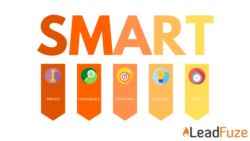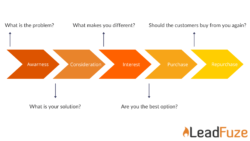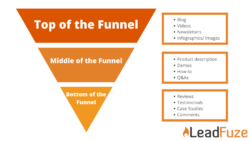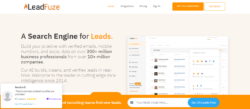What Is a Lead Generation Machine?
A lead generation machine is a structure involving all tactics, practices, and technologies used to capture and convert leads. It is a systematic process that is designed to automatically generate leads. Putting it together requires a great deal of research and experimentation.
The goal of setting up a lead gen engine is to acquire leads in the long term without having to radically change the structure.
Most companies share the same lead generation objectives, but not all of them have the same lead gen engine driving more leads. Many businesses will find different tools they will place across multiple sources and channels. A good lead generation machine aggregates all these into one system that operates without a need for constant tweaking.
Among the benefits of setting up a lead generation machine, we can mention:
- Balancing lead generation practices among the lead sources,
- Effectively improving the leads’ quality,
- Increasing the number of high-quality leads,
- Driving awareness and interest,
- Enhancing and maintaining the alignment between marketing and sales,
- Boosting sales revenue
According to Leadfuze – a lead generation agency helping businesses generate leads with cutting-edge data intelligence – the professionals that saw a return from their lead generation efforts are those who already had a structured lead generation machine.
How to Build Your Lead Generation Machine?
1 Set up your goals
Before you do anything ask yourself, what are my goals? Do you want more leads in general, more qualified leads, or both? Do you want to raise awareness, drive sales, or both?
Your goals must be SMART (specific, measurable, attainable, relevant, and timely).

By determining your lead generation goals, you’ll be able to figure out what tools will allow you to accurately measure your lead gen machine’s efficiency. It will give your sales team a clearer perspective of their workflow.
2 Identify your target audience:
After setting up your goals, you need to know who your ideal customer is. This requires you to research your audience.
It is crucial that you have a clear picture of who your ideal customers are. Figure out their demographics and how you can reach them.
There are plenty of people that would find your products or services interesting. But not all interest converts into sales. So to get results from your lead generation machine, you need to make sure that you are marketing to the right audience. You must qualify your leads. This can be challenging since it depends on the tools, channels, and platforms you are using.
Later in this article, we will share the different ways you find and track your target audience.

Bonus: The key to an efficient lead generation machine is to narrow down the people you are targeting. The more precise you are with your targeting the better you can focus on creating the best user persona, which we will discuss next.
3 Create your user persona
After identifying your target audience, you will need to research more to develop a user persona for your lead generation machine.
Creating a user persona demands careful consideration as it is the platform upon which you will build your marketing efforts. So, first, it’s important that you know what a user persona is.
A user persona is a hypothetical representation of your prospective customers. You can only create a user persona if you have enough data on your prospects. That data should be a product of thorough market research.

Generally, you can only modify your user persona if you have information about their:
- Demographics (age gender, education, location, income level, and occupation)
- Psychographics (lifestyles, interests, attitudes, beliefs, values, etc)
After you create your user persona, it’s important to test it to make sure it is an accurate representation of your ideal customer. For that, you can survey your existing customers.
Tools for identifying user persona psychographics
Determining the demographics for your persona is easy. However, figuring out how they behave or what their interests are can be challenging. Thankfully there are tools you can use for this, and some of the best ones are free. Among these are Google Ads, Google Analytics, and Google Search Console, which are great for recording audience behavior. These tools aggregate data on traffic, conversion paths and goals, as well as engagement paths and indicators.
Social media platforms are also useful platforms for tracking how feel about and engage with your products and services. You can notice that from the unsolicited reviews they give and the comments they make.
Facebook, LinkedIn, and Instagram also have excellent targeting and reporting features on their analytics dashboards.
4 Map your buyer’s journey
Once you have created, tested, and validated your user personas, you can now focus on mapping your buyer’s journey. The buyer’s journey is the process or path that a prospect takes from when they first discover their problem right through identifying your product as a potential solution to when they actually convert into a sale.
The path a prospect takes between lead and paying customer differs from company to company and from industry to industry.
This is what a typical buyer’s journey looks like:

-
Awareness
This is the first stage of the buyer’s journey. At this stage, the lead is still making sense of their problem. They are not yet ready to buy and likely unaware of the solution to their pain point. Imagine a person experiencing pain in their stomach. They are in pain, but they don’t know where specifically is the problem. Is it an ulcer, a food allergy, or food poisoning?
A carefully structured lead generation machine should be able to identify leads this early in their journey so your marketing team can nurture them.
Content plays a major role in filtering leads that enter your lead generation machine. So it’s important to research your ideal customer’s possible pain points so you can target them with the right informational content.
-
Consideration
Now that the potential customer is aware of their problem, you need to gently introduce them to your product as a possible solution to their pain. At this stage, the prospect is evaluating and weighing the different solutions available. They are now solution aware. Depending on the nature of your product, you may pitch them directly or push more targeted content to them.
They might not be ready to buy from you but your product may already be featuring on their list of possible solutions.
Bonus: your best chance here is to provide the most relevant and adequate type of content or deals for your targeted audience. This way they would choose your solution and not the competition.
-
Interest
Now that the prospect has gathered all the information they need, they will compare the solutions offered by the different providers that came up in their research.
Your job here is to pitch your solution as the best. You need to appeal to the prospect’s logical, emotional, and financial senses. In general, this is where content will serve you best. The people who reach this stage are most probably ready to make a purchase.
-
Decision (purchase)
This is where you want your leads to end up in their buyer’s journey. However, you don’t want the relationship to end here. You must remain available, not only for aftersales support purposes but to ensure your product remains top-of-mind with the customer. This is important for repeat purchases:
-
Repurchase (continuous purchase)
This is where the journey generally ends. We say ‘generally’ because, for products that aren’t once-off purchases, there will likely be repeat purchases.
Otherwise, if you have other propositions that you think will serve your clients then you have to frequently offer them as well since you likely have opened up lines of communication. For example, say, they are on your email list
Bonus: Your lead generation machine should be optimized for every stage of the buyer’s journey so you don’t lose prospects along the way. After all, it is your goal that every lead converts into a loyal customer.
Understanding and mapping your buyer’s journey guides your content planning and is critical for the success of your lead generation engine.
5 Develop your content
As we have already explained, your content should be customized to your user personas. This will help you determine which topics and tones to use when creating content.
That content should be assigned to the right stage of the buyer’s journey, otherwise, it will be irrelevant to them.
Now comes the most important question:
What type of content you should create?
There are plenty of content types that you could create. Marketers categorize them according to utilities or the type of business.
For example, there is content for outbound marketing that is not suitable for inbound marketing. Then there is content that a B2B company can use that would not work for a B2C audience.
Your goal should be to create a library of valuable content for specific personas that is segmented for specific stages of the buyer’s journey.
Here are some types of content that you can create no matter what kind of business you operate:
- Articles and blog posts: These can be informational or commercial
- Audio: Whether it’s simple music in the background or podcasts, audio content is very popular right now.
- Photos and images: Photography is very important in marketing, whether you are promoting your product or corporate image. Besides standard photographic images, this content now includes formats like memes, GIFs, and screenshots.
- Infographics: This visual content format that is portable and easy to embed displays content in a persuasive and eye-catching manner.
- Videos: That YouTube is now the second biggest search engine after Google tells you all you need to know about the growing appeal of video content. It’s great for showcasing products, whether it is through reviews, client testimonials, demos, or case studies.
- Website content: The most successful businesses use their website content for lead generation. Blog articles, landing pages, reviews, testimonials, and product descriptions are all website assets that can be used to capture leads.
- Flyers, brochures, magazines
- Newsletters: you can create newsletters that educate your customers and promote your products at the same time.
- Other types of content include Q&As, demos, polls, and quizzes.
Bonus: There is no formula for creating the best content. Therefore, your only option is to test or, if you already have a lot of content published, conduct a content audit.
That said, you should always ask these questions:
- Which content will have a higher impact on this buyer persona?
- Where on the buyer’s journey is the prospect I am addressing with this content?
- Did I include all the information that will help the prospect decide to purchase from you?
You should not worry if you don’t hit your targets this first time. Instead, use the insights you gain to inform and guide your content creation strategy going forward.
6 Align your content to each sales stage
We have talked a lot about lead nurturing and how to fuel your sales funnel with the right content for lead generation. So this is not repetition, rather it is an overview of what you need to include in your lead generation machine.

Top of the funnel: This content is meant to help your leads understand their problem better. It is designed to generate interest and attract users to your channels (for exp: blog, YouTube channel, or newsletter)
Middle of the funnel: Now you want to build a solid relationship between your business and your leads. This is where your lead nurturing efforts must be focused on building trust, reliability, and credibility.
You can only do this by providing solid information about your products or services and supporting your leads’ efforts in evaluating their options. The types of content you should be concentrating on at this stage are product descriptions, how-to guides, demos, Q&A articles)
Bottom of the funnel: The only thing that’s left at this stage is to push your lead into making the purchase decision. Usually the most successful content types for this are reviews and comparison articles.
7 Choose your distribution channels
You don’t have to stick to one distribution channel. You can always diversify. What’s important is to know where your prospects spend their time online. Is it on social media, email newsletters, or forums like Quora and Reddit? It may also make sense to use paid content distribution channels like PPC, display ads, and paid influencers.
Basically, if you don’t put your content in front of the right audience then your lead generation efforts will be in vain.
For effective lead nurturing you need to identify and automate your conversion journeys for each persona.
Bonus: Always make sure that your campaigns are specific to each persona so as to continuously engage them with valuable and targeted content.
8 Diversify your lead sources
Balancing your lead generation efforts between inbound and outbound marketing is the key to building a high-performance lead generation machine. This diversifies your lead sources and makes for a more robust lead-gen engine. However, this calls for carefully dividing your efforts across multiple lead sources.
Recently companies have been putting a greater emphasis on lead diversification, which has seen even B2B companies using both inbound and outbound marketing.
Of course, you have to measure the ROI of your overall strategy to determine if you need to tweak anything.
Inbound marketing
The inbound way is all about targeting people who go online to research solutions with targeted content. You can share your content on your website or social media platforms and use SEO and paid advertising to diversify your traffic sources.
Outbound marketing
Where with inbound marketing you target people who are actively seeking information, with outbound marketing you are directing content and marketing to people who have not shown they are interested in it. It’s all about initiating direct contact with the prospect, whether in person, via email, or teleprospecting. In addition, you can syndicate your content through multiple media sources.
9 Strengthen your efforts with lead generation technologies
Lead generation technology is rapidly advancing, with tools of all kinds now available. However, you have to invest in the right systems to build a lead generation machine that truly work for your business.
There are now tools available that you can use for any of the following tasks:
- Lead data collection,
- Email lookups,
- Email follow-ups,
- Prospecting and outreach,
- Communication,
- Advertising,
- Form & email collection,
- Customer data management,
- Landing page creation,
- Marketing automation,
- Process automation,
- Live chat,
- Social media scheduling.
For lead data collection, most growing business trust Leadfuze.

LeadFuze allows you to find contact information for specific individuals and for all employees at a company. You can even upload an entire list of companies and find contact information for people within specific departments. Furthermore, if you want to make Leadfuze your only automated lead gen system, you can:
- Set up Fuzebot, LeadFuze’s AI list builder to automatically adds new leads to lists that match specific criteria
- Configure integrations with CRM and cold email tools to automate outreach efforts. Among enterprise tools that integrate with LeadFuze are those from HubSpot, Salesforce, Mailshake, Salesflare, GSuite, PipeDrive, and Zapier.
Bonus: The secret is to find the right mix of tools to build your lead generation machine around. This will automate most of the tasks, leaving you more time to focus on other important aspects of your business. Your marketing and sales teams will be able to work more efficiently too.
Using marketing automation software allows your leads to smoothly move from one stage of the sales funnel to another depending on their actions and engagement rates. These stages might include:
- Subscriber
- Lead
- Marketing Qualified
- Sales Qualified
- Customer
How long it takes to move your prospects from one stage to the next depends on how warm and qualified they were as leads and the tools and strategies you use to nurture them.
In case you are struggling to figure out what marketing tools you might need to nurture your leads, a good first step is to research your market. You can also look at what your competitors are using.
10 Measure your lead generation efforts
There is a lot to measure and track if you are going to build a robust lead generation machine that churns out the right amount and quality of leads. At this stage, you have a suite of tools that are, ideally, working on auto-pilot generating leads for you. What will be harder to tell if you aren’t tracking the right metrics is the quality of the leads.
It’s crucial to know how many people read each of your blog posts, and how they landed there. You should know exactly how many people are opening your emails, and how many cold leads you left voicemails for called back.
You must know what your conversion rates are at every stage of the buyer’s journey – how many leads took the action you needed them to and moved to the next stage. Just as important is the time your leads take to convert. All these are important metrics to track if you want to know you have built a lead generation machine your business can depend on to feed your pipeline with enough leads.
As we said, the quality of the leads your lead gen engine is churning is just as important as the volume. Unless your leads meet carefully designed qualification criteria, their quality can’t be guaranteed. You may well be wasting resources.
For that reason, together your sales and marketing must develop a system for qualifying your leads. You must then find a way of automating that formula into your lead generation machine so that it is always on, scalable, and runs smoothly.
Other metrics to measure the quantity or quality of your leads are:
- Cost per lead
- Leads per Channel.
- Month-to-date success.
- Return on investment
11 Fine-tune your lead generation processes
Successful lead generation is about constantly evaluating and tweaking your processes to find what works best for your market and business.
Whatever it takes to build your lead generation machine, you want an efficient lead generation engine that brings leads that you can nurture into paying customers.
It is common that some leads will not follow the path you mapped in your buyer’s journey while others will lose interest in your product and drop out. So it’s important to have a mechanism for identifying where leads are leaking from the lead gen machine so you can fix whatever is causing it.
Whether it is your content that is not working or your competitor is offering a better or cheaper solution, you need to know what causes your leads to drop out of your funnel.
You must always be assessing, measuring, and tweaking your lead generation practices, tools, channels, sources, and content. No lead generation machine is perfect; there is always something that can be improved. That may also mean eliminating processes that are wasting your time and resources, hampering your efforts to generate highly qualified leads.
Drive more sales from your lead generation machine
Leads are worthless unless you can nurture them into paying customers. It is only qualified leads that you can rely on to increase your sales and drive more revenue to your business. So now that you have a long list of leads and a lead generation machine that is working full throttle, it is time to put your lead nurturing and management tools into action.
Before you can start nurturing your leads, you need to categorize them. They can fall into any one of these categories:
- Hot lead.
- Warm lead.
- Cold lead.
- Information qualified leads.
- Marketing qualified leads.
- Sales ready leads.
- Sales qualified leads
- Member service request leads
Why is this important? It’s simple, after categorizing them you will know which ones are closer to making a purchase, which ones need more nurturing, and what content you need to push to each group. While no leads are totally useless, some are warmer and more promising than others, and no lead-generation machine is smart enough to tell them apart every time.
Want to help contribute to future articles? Have data-backed and tactical advice to share? I’d love to hear from you!
We have over 60,000 monthly readers that would love to see it! Contact us and let's discuss your ideas!
